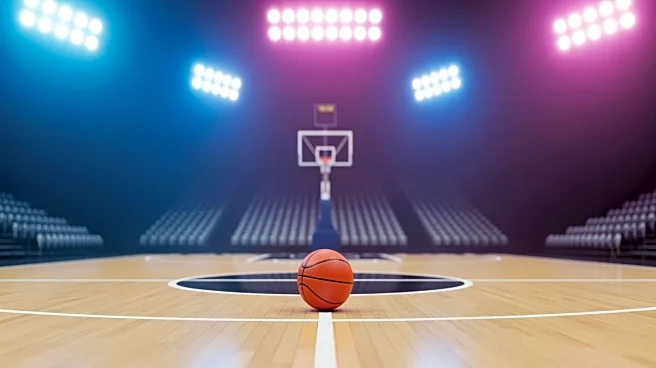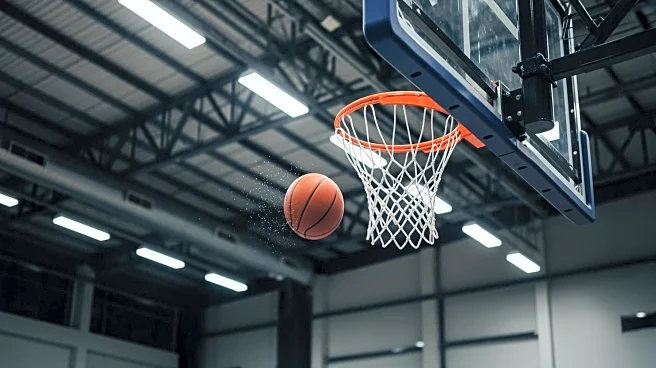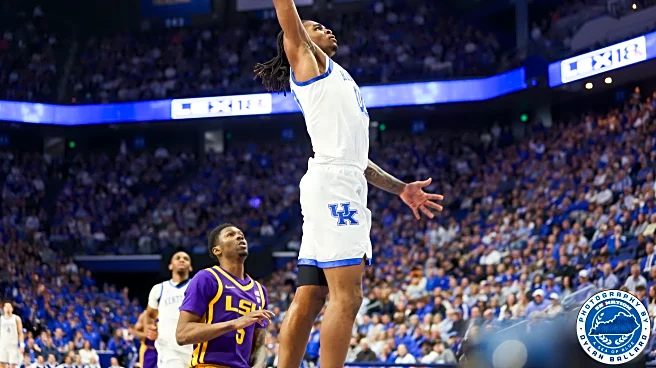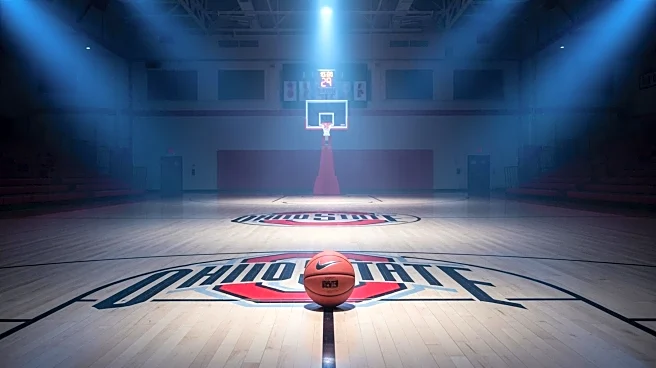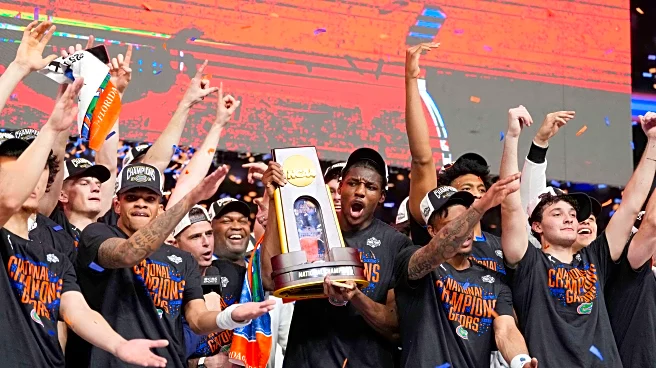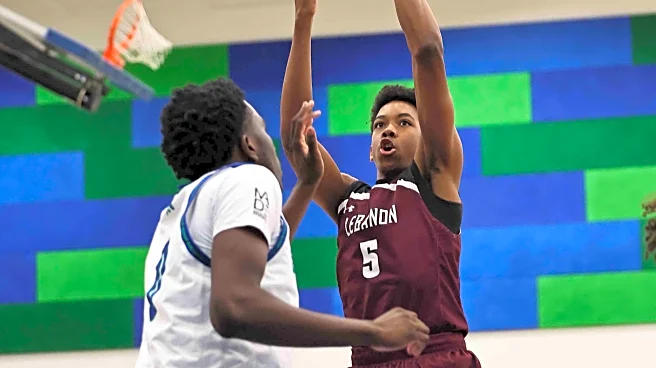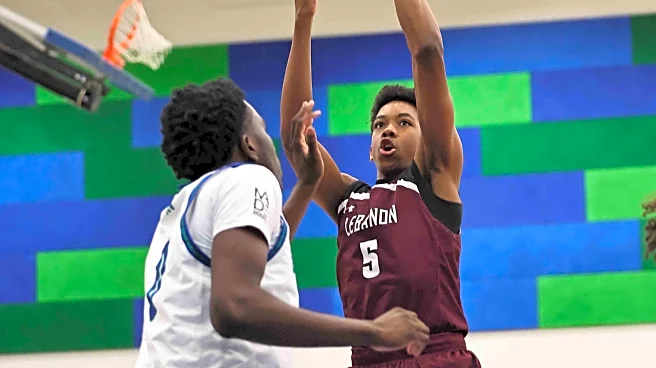What's Happening?
Bryce Hopkins, a promising basketball player, has transferred to St. John's University, where he is expected to be a key player under the guidance of coach Rick Pitino. Hopkins, originally from Illinois,
began his college career at Kentucky before moving to Providence, where he played under Ed Cooley. Despite suffering a torn ACL, Hopkins averaged over 15 points and eight rebounds per game at Providence. After entering the transfer portal, he chose St. John's, where Pitino aims to develop him into one of the top players in the country. Hopkins did not start in the preseason opener against Towson, but Pitino plans to include him in the starting lineup for an upcoming exhibition game against Michigan at Madison Square Garden.
Why It's Important?
Hopkins' transfer to St. John's and his potential development under Rick Pitino could significantly impact the team's performance in the upcoming season. Pitino, known for his motivational and innovative coaching style, is expected to push Hopkins to reach his full potential. This move could elevate St. John's standing in college basketball, attracting more attention and possibly improving their chances in the NCAA tournament. For Hopkins, playing under a renowned coach like Pitino offers an opportunity to refine his skills and increase his visibility, which could be crucial for his future career prospects in professional basketball.
What's Next?
Hopkins is set to start in the exhibition game against Michigan, which will be a critical test of his readiness and integration into the team. His performance in this game could set the tone for his role throughout the season. As St. John's prepares for the regular season, Pitino's strategy and Hopkins' development will be closely watched by fans and analysts. The team's success could hinge on Hopkins' ability to adapt and excel in his new environment, potentially influencing recruitment and team dynamics in the future.
Beyond the Headlines
Hopkins' journey through multiple colleges highlights the evolving nature of college basketball, where transfers and the use of the portal are becoming increasingly common. This trend reflects broader changes in college sports, where athletes seek environments that best support their development and career aspirations. The emphasis on player development and strategic coaching could lead to shifts in how teams are built and managed, impacting the competitive landscape of college basketball.
